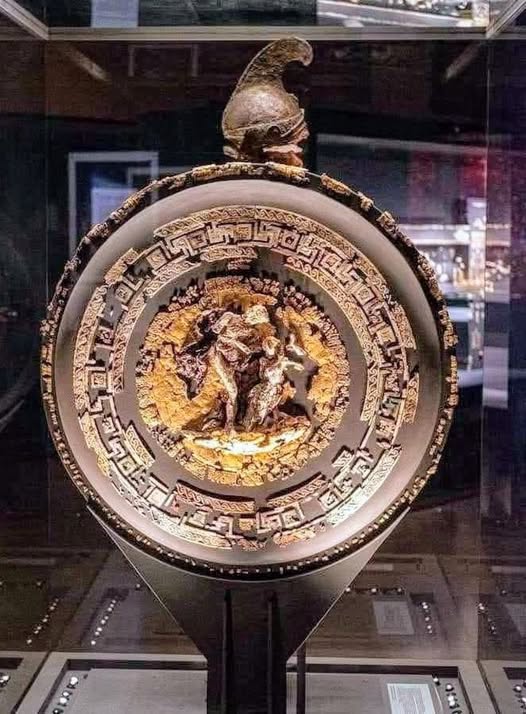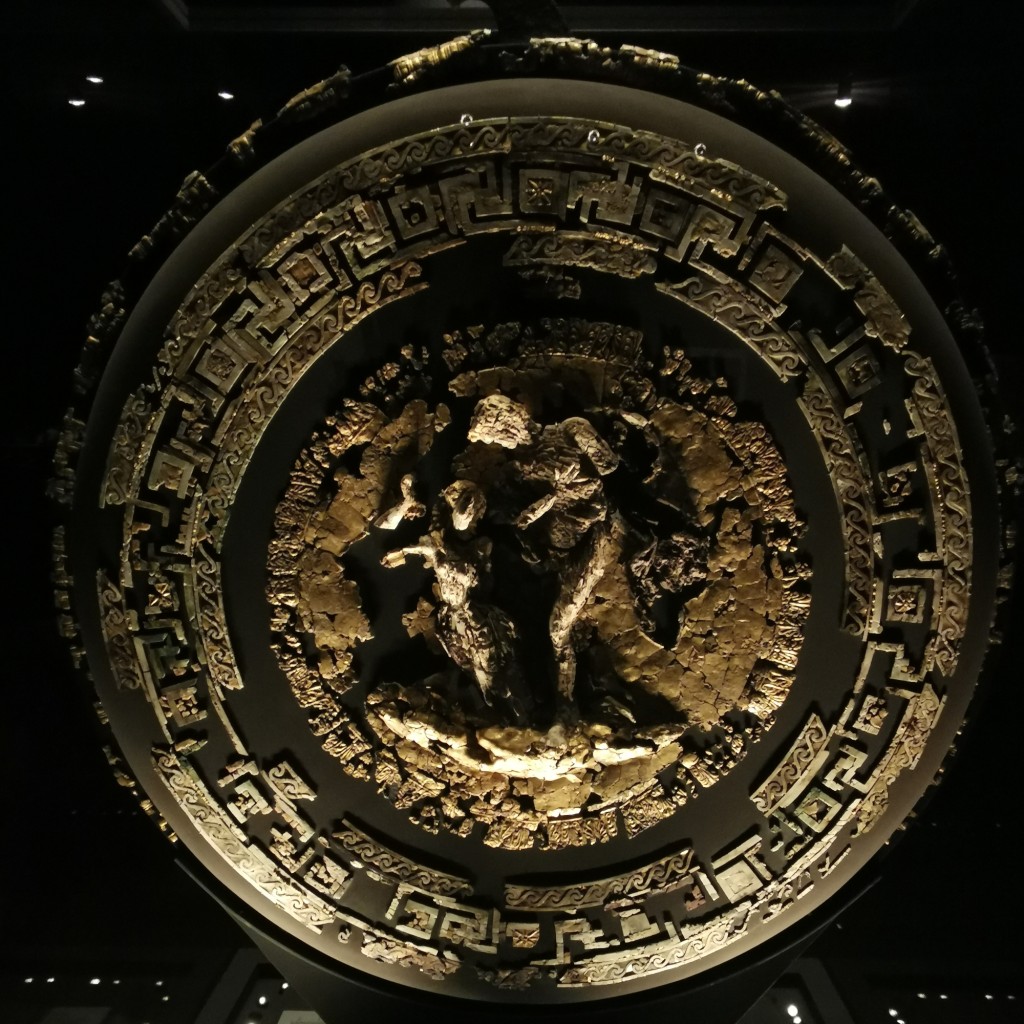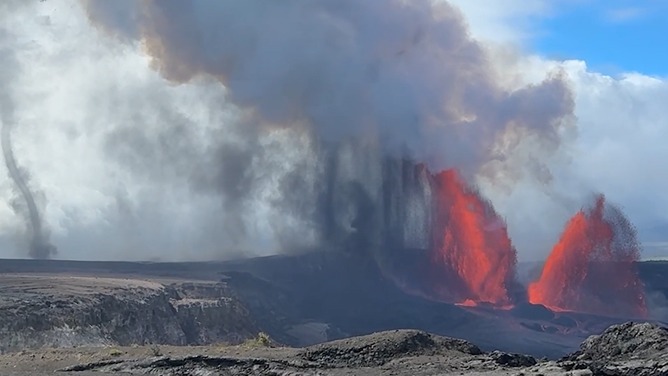
The shield of Philip II and archaeological treasures at Vergina in Greece

Today, in the middle of our tour of Macedonia, we went to pivotal places. Our first stop was the Nymphaion of Mieza, just below Naoussa, where we are staying. It is a verdant place of myrtle, ivy and many other plants growing amid ancient rock-cuttings. This is the place where Aristotle, the greatest Greek philosopher of his era, the late fourth century BC, tutored Alexander, the future king of Macedon, and his companions, the scions of noble families from all over the region.
And then we went to Vergina, ancient Aigai or Aiges. This is the place where, in myth and legend, the kingdom of Macedon was founded. It is also the place where in 1977, the Greek archaeologist Manolis Andronikos discovered one of the most astonishing finds ever.
Aigai is where Philip II, Alexander’s father and the man who turned Macedon into a single and centralised kingdom, and who submitted nearly all of Greece to his rule, built his palace. It is also where he was murdered in 336 BC. And where his son, Alexander (the Great) became king, and where he buried his father.
Andronikos’s discovery of a series of royal tombs, including that which most scholars agree is Philip’s, is a UNESCO-listed World Heritage site for good reasons. It is one of the best-designed museums in Greece, including the royal tombs and, even more importantly, the items found within them – they were, unusually, never looted. The tomb ascribed to Philip has a fine facade and is painted, but as we wrote already about the better-preserved tomb at Agios Athanasios, here we should focus on the finds.
What there is to see, just from Philip’s tomb, is far beyond the scope of a blog diary post. We might have to come back to this! The finds include the king’s armour and weaponry, likewise the armour and weaponry of his Thracian warrior wife (he had multiple spouses), the gold casket that contained his cremated remains, the gold wreath placed on his body before cremation, the silver vessels he probably used during symposia, the formal drinking parties that were central to noble life in his days, and much much more. The Vergina museum is a treasure of the highest art and craftsmanship of the Late Classical era.
For our image, we’ve chosen the ceremonial shield found in the main burial chamber. It is chryselephantine, meaning made of gold and ivory. Those materials were considered the most valuable in the Greek World, and their combination was usually reserved to the statues of gods in major temples, like the one of Zeus at Olympia, one of the Seven Wonders of the Ancient World. The Vergina shield, using the same materials, is unique. The shield itself does not survive, as it was probably made of an organic material, leather or starched linen or wood. Its elaborate decorations do survive. Its presentation is a triumph of the art of archaeological conservation. It has wave patterns and meanders in ivory around the edge, interspersed with gold plaques showing the sun or star symbol that was apparently the emblem of the Macedonian royal dynasty.
At the centre, there is a scene of two figures carved in ivory: a male Greek warrior killing an Amazon. This is almost certainly a depiction of Achilles, the greatest of the Greek legendary heroes and a supposed ancestor to Philip and Alexander, fighting the Amazon Queen Penthiselea, and falling in love with her the very moment he kills her.
The Vergina shield is a unique object, and part of an exhibition that is unmatched anywhere.


